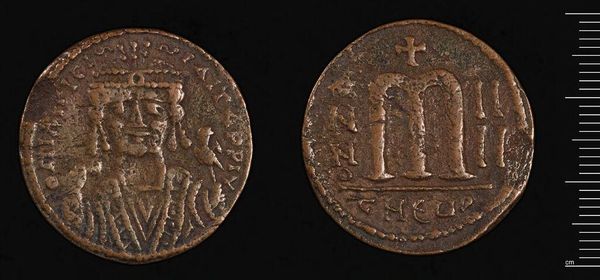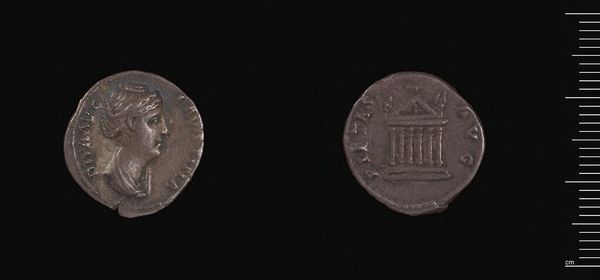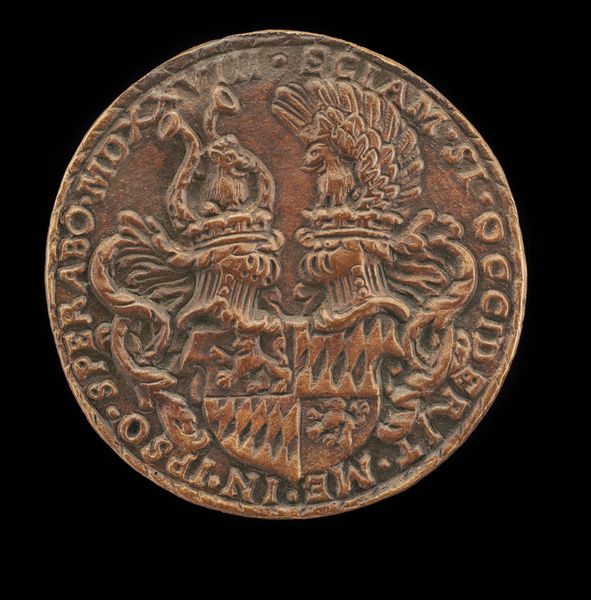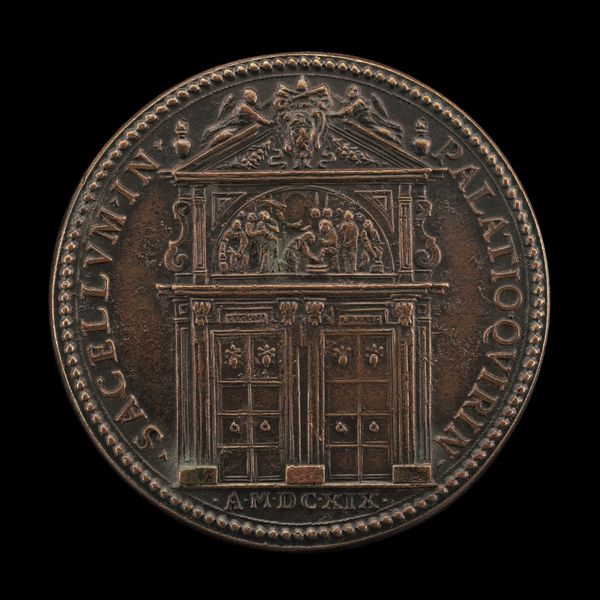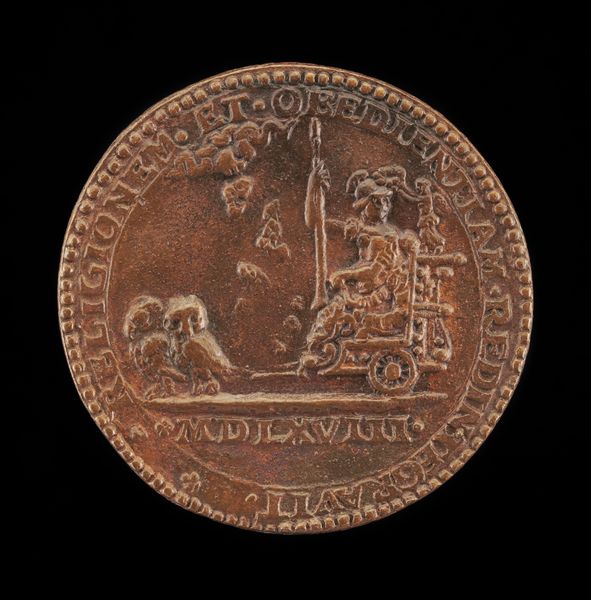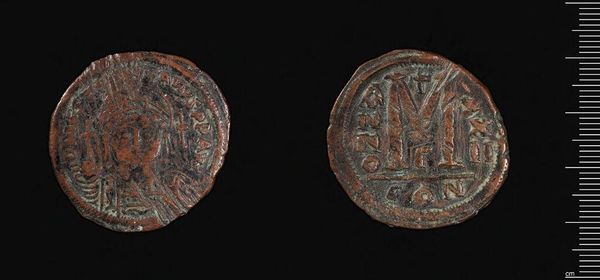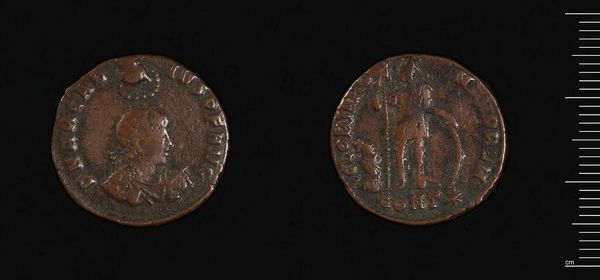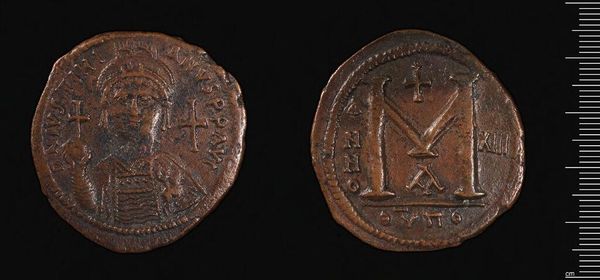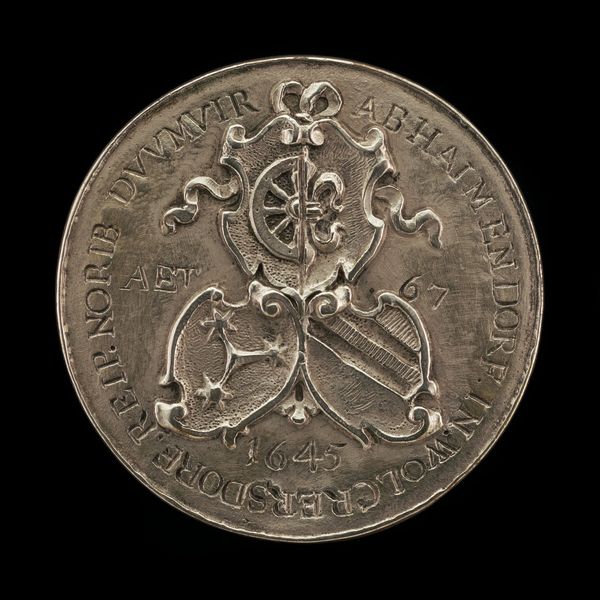![The Church of Santa Lucia at Grottammare [reverse] by Domenico Poggini](/_next/image?url=https%3A%2F%2Fd2w8kbdekdi1gv.cloudfront.net%2FeyJidWNrZXQiOiAiYXJ0ZXJhLWltYWdlcy1idWNrZXQiLCAia2V5IjogImFydHdvcmtzLzM1ZGJmOGYwLTZiZDctNDM4MC1iYTg3LWIyZDNlYzU5MmMwZi8zNWRiZjhmMC02YmQ3LTQzODAtYmE4Ny1iMmQzZWM1OTJjMGZfZnVsbC5qcGciLCAiZWRpdHMiOiB7InJlc2l6ZSI6IHsid2lkdGgiOiAxOTIwLCAiaGVpZ2h0IjogMTkyMCwgImZpdCI6ICJpbnNpZGUifX19&w=3840&q=75)
metal, relief, bronze, sculpture
#
portrait
#
medal
#
metal
#
sculpture
#
relief
#
bronze
#
sculpture
#
history-painting
#
italian-renaissance
Dimensions: overall (diameter): 4.71 cm (1 7/8 in.) gross weight: 46.44 gr (0.102 lb.) axis: 1:00
Copyright: National Gallery of Art: CC0 1.0
Curator: Oh, this has a lovely, warm feeling. Almost sepia-toned, like looking back through time. Editor: We're looking at "The Church of Santa Lucia at Grottammare [reverse]" by Domenico Poggini, dating back to 1590. It's a bronze relief, specifically a medal. Curator: A medal! It looks monumental, like it should be on a building! But held in your hand, that shifts the entire narrative, doesn't it? Suddenly it's portable power, a pocket-sized declaration of faith. Editor: Precisely. Think of the context – the late Renaissance, a period grappling with religious reformations and counter-reformations. A medal like this, depicting the Church of Santa Lucia, could function as both a symbol of civic pride for Grottammare, and as an assertion of Catholic identity. Curator: I love the detail. Even at this scale, you can see the individual columns, the little details above the doorway… it’s such a clear statement. It must have taken the engraver great skills. What's fascinating is the "reverse." What was on the other side? Editor: Usually, a portrait of a ruler, a patron, or even a saint. The pairing of that figure with the architectural rendering of the church on this side invites a deeper meditation on power, patronage, and religious authority. The medal operates almost like a portable monument. Curator: I wonder, who carried it? What hands held this piece of bronze, passing on faith like a tangible inheritance? I bet they never imagined we would examine it in a glass vitrine. Or worse... melt it down for bullets! Editor: Right, and we can think about the concept of reverse. This could mean the other side, yes, but more significantly, that Poggini presents a space of possibilities: perhaps an individual’s potential to see the institution, the Church, differently through his own vision. What new meanings could they give to it? Curator: Hmmm, fascinating. I come back to its feeling – of solidity and permanence, even as a small token. What an amazing time capsule in bronze. Editor: Indeed. And by understanding these artifacts, we can unearth so much about the world they were part of and about the very nature of belief itself.
Comments
No comments
Be the first to comment and join the conversation on the ultimate creative platform.
